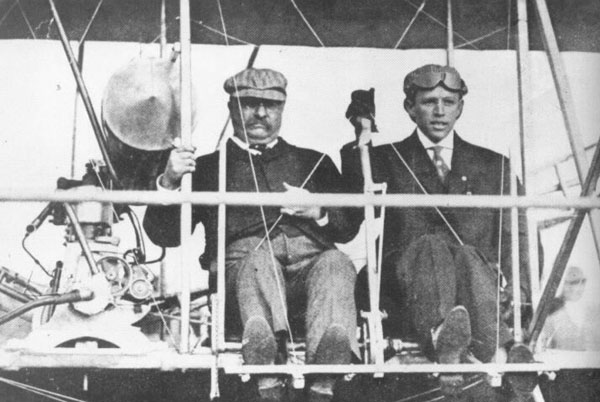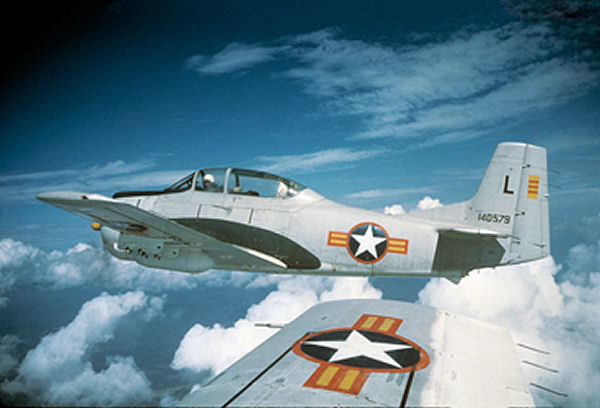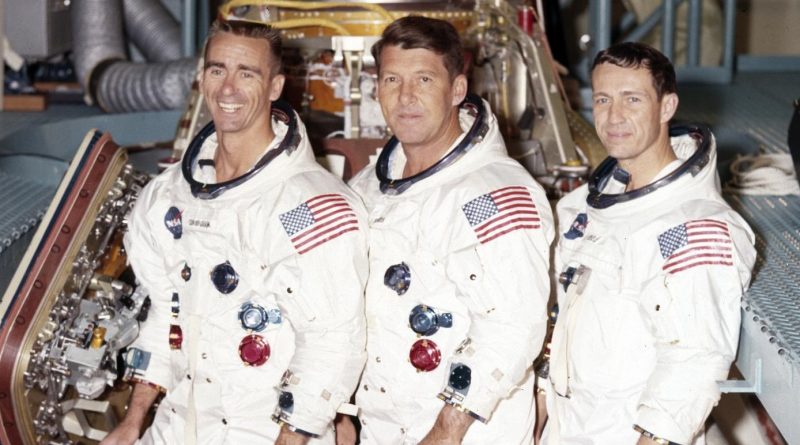October 11 in U.S. military history
1910: Wright Brothers pilot Archibald Hoxsey crosses paths with President Theodore Roosevelt while at St. Louis during a cross-country flying exhibition and invites him for a ride. Roosevelt initially refuses, but his adventuresome spirit gets the best of him and he changes his mind. Roosevelt straps in and becomes the first president to fly, afterward saying it was “the bulliest experience I ever had.”

1939: A letter written by Hungarian-born physicist Leo Szilard, and signed by Albert Einstein, reaches President Franklin D. Roosevelt, warning that the Germans could develop an atomic weapon and that the United States should begin their own nuclear research. Roosevelt quickly authorizes a committee on uranium, setting in motion what will eventually become the Manhattan Project.
1942: U.S. Naval forces under the command of Rear Admiral Norman Scott intercept a Japanese fleet, commanded by Rear Adm. Aritomo Gotō, attempting to reinforce troops on Guadalcanal in the Battle of Cape Esperance. Fighting begins shortly before midnight off the northwest coast of the island when the Japanese are caught by surprise. The heavy cruiser Furutaka and destroyer Fubuki are sunk during the gun battle, and Adm. Gotō is mortally wounded. Planes from Henderson Field strike the retreating Japanese fleet the next morning and sink two additional Japanese destroyers the following day. Japanese sailors who jumped overboard refuse to be rescued by American ships, instead condemning themselves to a horrifying death in the shark-infested waters.
1945: Marines of the III Amphibious Corps land in China to assist in repatriating hundreds of thousands of Japanese and Koreans and to protect American lives and property. By the time the Marines depart China the following year, 35 have been killed and 43 wounded in clashes with Mao Zedong’s Communist forces.

1961: President John F. Kennedy authorizes deployment of the Air Force’s 4400th Combat Crew Training Squadron to South Vietnam to support the counterinsurgency effort against the Viet Cong. The airmen are equipped with World War II-era warplanes and conduct strikes against the communist supply lines and fly close air support missions in support of U.S. Special Forces and the South Vietnamese military.
1968: Astronauts Walter M. Schirra (Capt., USN), Donn F. Eisele (Col., USAF), and Walter Cunningham (Col. USMCR ) blast off aboard Apollo 7. The crew, commanded by Schirra, would orbit the Earth for 11 days and transmit the first live television broadcasts from orbit.
1971: Marine legend Lt. Gen. Lewis B. “Chesty” Puller, the highest decorated Marine in history, passes away. Among his numerous decorations, Puller earned the nation’s second-highest award for valor six times (five Navy Crosses and a Distinguished Service Cross) — second only to Capt. Eddie Rickenbacker, America’s top flying ace of World War I. The 37-year veteran served in the Nicaraguan and Haitian campaigns, as well as World War II and the Korean War.

Today’s post is in honor of Sgt. Frank R. Zaehringer III, who gave his life for our country on this day in 2010. The 23-year-old native of Reno, Nev. was killed while conducting combat operations in Afghanistan’s Helmand province. Zaerhringer had previously served in Iraq and was assigned to 2d Battalion, 9th Marine Regiment, 2nd Marine Division, I Marine Expeditionary Force.
